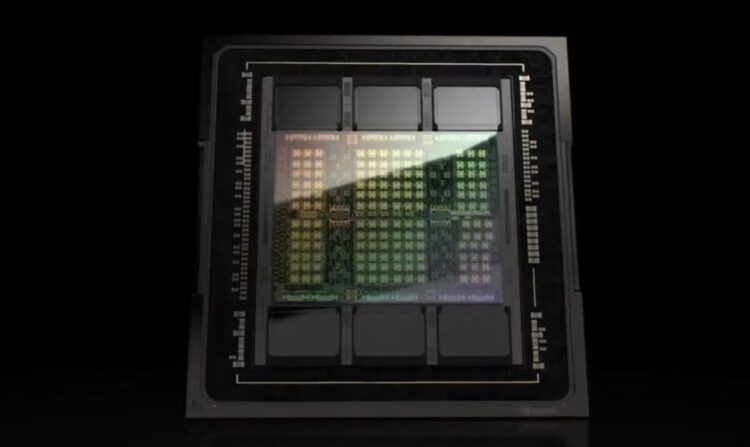SUMA.ID – A recent Geekbench leak has put NVIDIA’s N1X chip in the spotlight, hinting at a revolutionary ARM-based processor that could redefine desktop computing. Developed in partnership with MediaTek, the N1X combines a 20-core CPU with an integrated GPU that rivals the GeForce RTX 5070. This article explores the leaked specifications, benchmark results, and the potential impact of the N1X on the Windows-on-ARM ecosystem.
NVIDIA N1X: A Bold Leap for ARM Processors
The NVIDIA N1X, revealed through Geekbench 6.2 and 6.4 databases, has ignited discussions across tech communities. With a powerful CPU and an integrated GPU, this chip could challenge the dominance of x86 processors in desktops, laptops, and AI workstations.
Leaked NVIDIA N1X Specifications
According to Geekbench data and industry sources, the N1X offers the following specs:
- CPU: 20 cores (10× Cortex-X925 + 10× Cortex-A725)
- Base Clock: 2.81 GHz, with potential boost up to 4 GHz
- Test Platforms: Linux Ubuntu 24.04.1 and Windows AArch64
- System RAM: 119–128 GB (shared memory)
- Estimated TDP: 80–120 watts
These specs position the N1X as a high-performance solution for premium devices, blending power and efficiency.
Geekbench Scores: Rivaling Ryzen AI
Geekbench 6.2.2 results showcase the N1X’s impressive CPU performance:
- Single-Core Score: 3,096 points
- Multi-Core Score: 18,837 points
These scores place the N1X on par with or slightly ahead of the Ryzen AI 395HX and close to Intel’s Ultra 9 285HX in multi-core tasks. This indicates NVIDIA’s ambition to compete with x86 giants in the desktop and laptop markets.
GPU Performance: RTX 5070-Level Power
The N1X’s integrated GPU, tested via Geekbench 6.4.0 OpenCL, is a standout feature:
- Streaming Multiprocessors: 48 SMs
- CUDA Cores: ~6,144 (assuming 128 CUDA cores per SM)
- OpenCL Score: 46,361 points
This GPU performance matches the GeForce RTX 5070, making the N1X’s integrated graphics the most powerful in any ARM SoC to date. It could transform gaming laptops and portable AI workstations.
Potential Impact: Windows-on-ARM and Beyond
The N1X is likely a consumer variant of NVIDIA’s AI-focused GB200 or GB10 Spark Superchip, designed for high-end Windows-on-ARM devices. It may debut at CES 2026, targeting applications such as:
- Premium Laptops: Delivering RTX 5070-level graphics without a discrete GPU.
- AI Workstations: Powering complex machine learning and AI tasks.
- Desktop PCs: Offering a compelling ARM alternative to x86 systems.
Community Response: Excitement with Reservations
Tech enthusiasts on platforms like Reddit are optimistic but cautious about the N1X. As an engineering sample, several factors could affect its final performance:
- GPU Clock Speeds: Currently low at ~1.048 MHz.
- Driver Optimization: Firmware and drivers are still in development.
- Performance Tuning: Final clock speeds and efficiency are yet to be finalized.
Despite these uncertainties, the prospect of a 20-core CPU paired with an RTX 5070-class GPU in a single chip has sparked enthusiasm for its potential to reshape portable and AI-driven computing.
NVIDIA N1X Specifications at a Glance
| Feature | Details |
|---|---|
| CPU | 20-core ARM (10× Cortex-X925 + 10× Cortex-A725) |
| Single-Core Score | 3,096 (Geekbench 6.2) |
| Multi-Core Score | 18,837 (Geekbench 6.2) |
| GPU | 48 SMs (~6,144 CUDA Cores) |
| OpenCL Score | 46,361 (Geekbench 6.4) |
| RAM | 119–128 GB shared |
| TDP Estimate | 80–120 watts |
| Target Platforms | Windows-on-ARM, AI desktops, workstations |
| Predicted Launch | Late 2025–Early 2026 (CES 2026) |
Conclusion: A New Era for ARM Desktop Chips
The NVIDIA N1X Geekbench leak signals a major advancement for ARM processors in high-performance computing. With CPU performance rivaling Ryzen AI and GPU capabilities matching the RTX 5070, the N1X could challenge Intel and AMD’s dominance in laptops, desktops, and AI systems.
As an engineering sample, its final performance is still uncertain, pending further tuning and independent testing. If NVIDIA meets these expectations, the N1X could become a game-changer for Windows-on-ARM devices and premium PCs by early 2026.













